#composting innovations
Explore tagged Tumblr posts
Text
Top 5 Eco-Friendly Technologies You Need to Know About
Introduction
Eco-friendly technologies are designed not to disturb nature and its processes. The domains of such technologies include energy, transportation, construction, waste management, and many more. This blog outlines 5 of the best eco-friendly technologies that create a visible difference as we walk towards becoming a sustainable world. Read to continue link
#Eco-Tech#Tagsadvanced recycling technology#composting innovations#eco-friendly living#eco-friendly technologies#eco-friendly transportation#electric vehicles#energy-efficient designs#EV advancements#green building materials#green tech#renewable energy#smart irrigation systems#smart wind farms#solar power innovations#sustainable building practices#sustainable future#sustainable technology#waste management solutions#water conservation technology#wind energy developments#Technology#Science#business tech#Adobe cloud#Trends#Nvidia Drive#Analysis#Tech news#Science updates
1 note
·
View note
Text
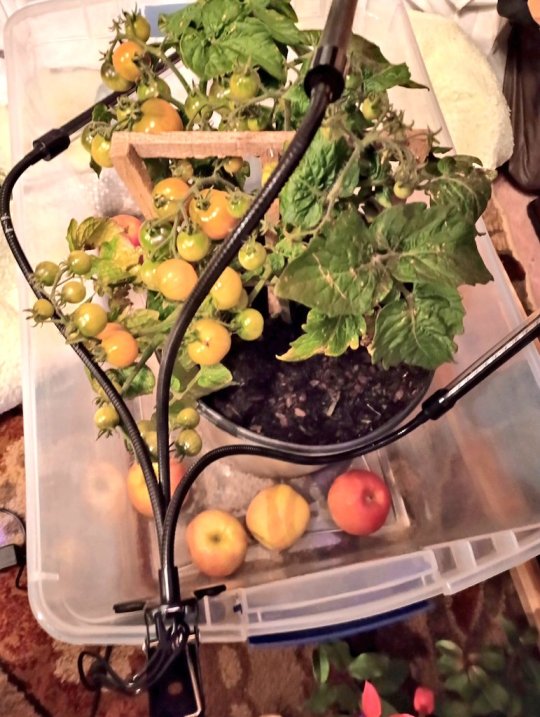
Unexpected frost last night, I attempt to ripen tomatoes on the vine with sacrifices to the ethylene gods.


#tomatoes#growth#gardening#indoor garden#indoor plants#science#mad scientist#an attempt was made#forest#self sufficiency#self sustaining#idk what im doing#smarthometechnology#innovation#innovative#innovación#entrepreneur#composting#growyourbusiness#ganja#girls who smoke weed#smoker#smoke weed everyday#blowing smoke#weedlife#weed intox#weedsociety#hashtag#leaves#tomato sauce
3 notes
·
View notes
Text

Discover the essentials of innovative organic farming with our beginner's guide. Learn sustainable practices for crops and eco-friendly agriculture.
Do Read: https://bharatvarshnaturefarms.com/innovative-organic-farming-a-guide/
#Innovative Organic Farming#Beginner’s Guide to Organic Farming#Sustainable Agriculture Practices#Organic Farming Techniques#Crop Rotation Benefits#Cover Cropping Methods#Composting in Organic Farming#Integrated Pest Management (IPM)#Agroforestry in Sustainable Farming#Biofertilizers and Biopesticides
1 note
·
View note
Text
How the Deep Litter System Transformed Pig Farming in Kajiado
The world of agriculture is continuously evolving, with farmers embracing innovative solutions to enhance productivity, improve animal welfare, and ensure environmental sustainability. In 2023, I had the privilege of collaborating with a dedicated farmer in Kajiado, Kenya, who was running a medium-sized pig farm with 30 sows. Our journey towards transforming his operations ended with the…
#agribusiness success stories#compost from pig litter#cost-effective pig farming#deep litter system#deep litter system benefits#eco-friendly pig farming#environmental stewardship in pig farming#innovative pig farming practices#low maintenance pig farming#nutrient-rich compost#pig farm productivity#pig farm sustainability#pig farming in Kajiado#pig farming innovations#pig health improvement#pig welfare improvement#reducing pig mortality#sustainable agriculture practices#sustainable pig farming#waste management in pig farming
0 notes
Text
Green Technology and Sustainability: Paving the Way for a Greener Future
As our planet faces increasing environmental challenges, green technology emerges as a beacon of hope. Green technology, or clean technology, refers to innovations designed to reduce our environmental impact, promote sustainability, and foster a healthier planet. Let’s delve into how green technology is shaping our future and why it’s crucial for achieving long-term sustainability. Understanding…
#carbon footprint#circular economy#clean technology#climate change#composting#eco-friendly building#electric vehicles#energy efficiency#Environmental Impact#green construction#green innovation#green technology#Recycling#renewable energy#solar power#Sustainability#Sustainable Practices#Sustainable transportation#waste management#wind turbines
0 notes
Text
Young couple self-builds hempcrete home with innovative compost toilet
youtube
0 notes
Note
One time, I had an English professor tell me I should stop using my inhaler because it was bad for the environment.
Yeah an if you dropped dead it would significantly reduce your carbon footprint too, huh. What if we ALL just stopped breathing. Can’t be throwing fistfuls of plastic fuckin straws directly into the South Pacific when you got a BPM of zilch, can you? What a fuckin innovator. Was he head of your nation’s EPA *directly* before he retired to become world’s youngest baseline edgelord 4chan ass 14 year old boy with tenure, or did he wait for his 3rd consecutive Nobel peace prize before giving someone else a chance? Ask him if his back hurts from carrying the weight of all the world’s most pressing concerns to and from Chuck E Cheese each night or if his tiny spiny propellor hat lightens the load a bit. Did his big red clown nose come standard with his tweed set or he spring for the premium model with the biodegradeable sustainable foam and the super-boosted honk-honk action? Are his size 23 clown bitch oxfords custom? Does he take one off to use as a canoe on his annual vacations to his summer home in the balmy and tropical shit fuck dumbass islands or does he just levitate everywhere he goes by the power of his unparalleled Xmen level intellect. Can you ask him if Magneto is gonna spare the human race to run laps in his hamster wheel electrical generator complex or if he’s just gonna wipe us all the fuck out for the carbon tax credit. Ask him if the weight of his gigantic balls dragging in the ground behind him everywhere he goes adds to the mileage on his Tesla. When he wipes his ass does he use single ply to save the trees or just a fistful of baby ducklings that he can then gently bathe by hand with water collected by the rain barrel in the endangered orchid garden by the solarium on the west side of his sprawling villa, the one he bought when he sold the patent for the perpetual motion motion machine he built out of toothpicks and marshmallows in third grade before the obvious intellectual gap between himself and the rest of us bumbling simpletons weighed him down and killed his passion to create. What other wisdom has he yet to share with the world? What other knowledge that only he and my reiki-healing essential-oil-drinking violet-aura neighbour know that may benefit us all? Holy shit, have I been drinking WATER my whole life? That shit that whales live in? Guess I’ll just go lay in a hole out back and wait for the compost heap to take me. Should I confess my sins to Captain Planet first, so he may redeem my wicked soul in the true Eco Catholic way, or was that recyclable soda can I threw in the trash downtown at last year’s garlic bread festival because there were no recycling bins provided the final straw that made me unworthy of glorious green salvation? BRB, gotta go strip naked and flagellate myself before the begonias so that they may know the depth of my remorse. Don’t worry, I only buy locally-sourced hemp lashes produced by small home businesses at the farmer’s market, they have a three-for-two sale on Sundays if you bring your own reusable bag. Christ on a fucking cupcake
3K notes
·
View notes
Text
The Transformative Journey of the Bioplastic Packaging Industry
The global bioplastic packaging market size is expected to reach USD 50.57 billion by 2030. The growth of the global plastics packaging industry is likely to be driven by the increasing consumption of plastics in packaging food, beverages, cosmetics, personal care, and consumer goods.

Gain deeper insights on the market and receive your free copy with TOC now @: Bioplastic Packaging Market Report
Bioplastics are plastics that are made from renewable sources such as corn, sugarcane, potato, wheat, rice, vegetable oil, or cellulose. There are two types of bioplastics, namely biodegradable plastics and non-biodegradable plastics. Biodegradable plastics include polylactic acid, starch blends, PBAT, and PBS, while non-biodegradable plastics include polyethylene, polyethylene terephthalate, polyamide, and polytrimethylene terephthalate.
Bioplastic packaging is considered to be an environment-friendly solution and helps enhance the final product’s appearance. Growing usage of bioplastics in flexible packaging is expected to fuel market growth. The growing demand for food, due to the rising global population, is a key factor driving the demand for flexible packaging. Moreover, the packaged food industry in the U.S. and Europe has grown tremendously in recent years. Furthermore, increasing concerns regarding toxins in petrochemicals, along with depleting crude oil reserves, are driving the development of bio-based polymers.
Regulations by most governments restricting the consumption of petroleum-based plastics in certain applications such as food packaging and medical devices are expected to further incentivize bioplastic production in the plastics industry. However, the high cost as compared to conventional plastics is a major factor restraining the market growth. Currently, low prices of conventional plastics are making it difficult for bioplastics to achieve competitive pricing.
#Bioplastic Packaging#Sustainable Packaging#EcoFriendly Materials#Green Packaging#Biodegradable Plastics#Plant Based Packaging#Circular Economy#Packaging Innovation#Reducing Plastic Waste#BioMaterials#Plastic Free Packaging#Environmentally Friendly#Packaging Solutions#Bioplastics#Compostable Packaging#Renewable Materials#Packaging Design#Responsible Consumption#Sustainable Choices#Future Of Packaging
1 note
·
View note
Text
the Chicken furthermore tries to convince you to practice sorcery in a fun and fulfilling way
There is a difference between practicing goal-oriented practical sorcery, and placing the entire value of your sorcery on whether or not you achieved the goal. One of these things is soul-crushing.
Practicing sorcery should be it's own reward. The actual steps you are performing should be stuff that you like, or thrills you, or captures your fascination. As an activity, practicing sorcery should be satisfying regardless of whether or not the spellwork manifests properly.
If the sorcery on your plate is not satisfying, compost it and return to the endless buffet and try a different type of sorcery.
If you do not have the things you need, your first step to a spell becomes innovation. What is the purpose of the thing in the spell, and how can it be replaced?
A spell can be cast with a length of string, or a paper and pen. Or with a bit of crayon. Or a dead fly. Or with just you.
Sorcerous knowledge tends to reveal itself when the clutter of correspondences is placed aside, so having few things to practice with is not a curse.
You do not need an interpersonal spiritual friendship with every single spirit you want to work with in magic. YOU DO NOT.
Interpersonal friend relationships with spirits should probably be reserved for very special spirits in your "inner court," the beings with which you choose to share your life and that you honor as teachers and guides.
Many spirits are pleased to assist with magic, but have no interest in getting to know us personally.
Imagine if everyone in your askbox wanted to ask you for help on something you're knowledgeable about, but instead of just asking for help, they first wanted to DM you for a few weeks to make sure you're comfortable with being asked for help, meanwhile on your correspondence chart pinned post it says "I can help with [topic]! Just ask!"
Asking spirits for help in magic is a good, valid way to start building a relationship with them.
Repeatedly calling on the same spirit or type of spirit over and over in spellwork is a fantastic way to deepen your relationship with them.
Working with a spirit in magic does not mean you are obligated to build a shrine to it, venerate it, talk to it outside of spellwork, or any of that.
Practicing sorcery is not the same thing as casting a spell. Practicing sorcery also means practicing the composite skills which come together to make a spell.
A spell is like a completed painting. But to make that painting, the artist needed several skills: the ability to sketch the scene, knowledge of how to apply and work with their paint, color theory, an understanding of how to render landscapes, and so forth. As a sorcerer, your skillset might be imbuing intent, raising energy, centering and grounding, practicing trance, practicing psychism or divination, etc. As you gain familiarity with these things, spells become less like an imposing stranger, and more like someone you're sure you've met before.
Practice can be it's own reward, but discipline is often required for progress.
Raising energy once a day, forever? I think not.
Raising energy once a day for seven days? Or, dedicating to doing it a total of ten times this month? Perhaps so.
An artist may not be in love with every single step of the process, and sometimes a sorcerer may have to get good at a skill that's not their favorite. But if no part of the process sparks joy, then something is wrong.
Sucking at something is the first step to being kind of good at something. Be reasonable with yourself: does the beginner artist doodle a landscape, then look at their work and declare that their art "doesn't work"?
Not every witch is talented at every sort of sorcery. Not creating a potent prosperity spell after five tries doesn't mean you're bad at magic. It might mean that your current understanding of prosperity magic precludes good results, or that you are casting on one very intransigent situation, or that your true talents lie in destruction and chaos instead of peaceful growth.
Set practice goals, give it an honest go, and move on when the time is right: "I am going to practice raising Fire energy and putting it into this stone using the Pore Breathing method. I'm going to do it fifteen times." (3 months later): "That sucked and it never worked, but I did it all fifteen times. Next I'm going to do a grounded roots visualization and use it to channel water energy to cleanse my room." (10 days later): "That was awesome, I want to do it more than 15 times."
Play around and be silly with it. Taking your path seriously is not the same thing as taking your path somberly.
Sports teams practice drills to be ready for game day. Sorcerers are wise to take a page from their book, because when real-life game day arrives, it feels much better to deal with it when you know you've been having pretty good success with channeling water energies, so maybe it's best to do something with that, because you can't move fire for dick.
580 notes
·
View notes
Text
Introduction To Supporting Sustainable Agriculture For Witches and Pagans
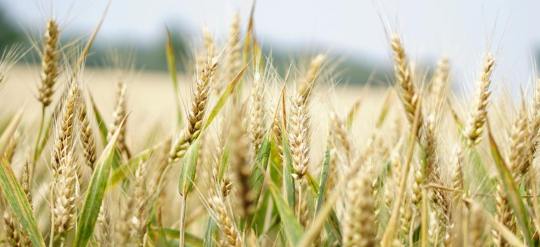
[ID: An image of yellow grain stocks, soon to be harvested. The several stocks reach towards a blurred open sky, focusing the camera on he grains themselves. The leaves of the grains are green and the cereals are exposed].
PAGANISM AND WITCHCRAFT ARE MOVEMENTS WITHIN A SELF-DESTRUCTIVE CAPITALIST SOCIETY. As the world becomes more aware of the importance of sustainability, so does the duty of humanity to uphold the idea of the steward, stemming from various indigenous worldviews, in the modern era. I make this small introduction as a viticulturist working towards organic and environmentally friendly grape production. I also do work on a food farm, as a second job—a regenerative farm, so I suppose that is my qualifications. Sustainable—or rather regenerative agriculture—grows in recognition. And as paganism and witchcraft continue to blossom, learning and supporting sustainability is naturally a path for us to take. I will say that this is influenced by I living in the USA, however, there are thousands of groups across the world for sustainable agriculture, of which tend to be easy to research.
So let us unite in caring for the world together, and here is an introduction to supporting sustainable/regenerative agriculture.
A QUICK BRIEF ON SUSTAINABLE AGRICULTURE
Sustainable agriculture, in truth, is a movement to practise agriculture as it has been done for thousands of years—this time, with more innovation from science and microbiology especially. The legal definition in the USA of sustainable agriculture is:
The term ”sustainable agriculture” (U.S. Code Title 7, Section 3103) means an integrated system of plant and animal production practices having a site-specific application that will over the long-term:
A more common man’s definition would be farming in a way that provides society’s food and textile needs without overuse of natural resources, artificial supplements and pest controls, without compromising the future generation’s needs and ability to produce resources. The agriculture industry has one of the largest and most detrimental impacts on the environment, and sustainable agriculture is the alternative movement to it.
Sustainable agriculture also has the perk of being physically better for you—the nutrient quality of crops in the USA has dropped by 47%, and the majority of our food goes to waste. Imagine if it was composted and reused? Or even better—we buy only what we need. We as pagans and witches can help change this.
BUYING ORGANIC (IT REALLY WORKS)
The first step is buying organic. While cliche, it does work: organic operations have certain rules to abide by, which excludes environmentally dangerous chemicals—many of which, such as DDT, which causes ecological genocide and death to people. Organic operations have to use natural ways of fertilising, such as compost, which to many of us—such as myself—revere the cycle of life, rot, and death. Organic standards do vary depending on the country, but the key idea is farming without artificial fertilisers, using organic seeds, supplementing with animal manure, fertility managed through management practices, etc.
However, organic does have its flaws. Certified organic costs many, of which many small farmers cannot afford. The nutrient quality of organic food, while tending to be better, is still poor compared to regeneratively grown crops. Furthermore, the process to become certified organic is often gruelling—you can practise completely organically, but if you are not certified, it is not organic. Which, while a quality control insurance, is both a bonus and a hurdle.
JOINING A CSA
Moving from organic is joining a CSA (“Community supported agriculture”). The USDA defines far better than I could:
Community Supported Agriculture (CSA), one type of direct marketing, consists of a community of individuals who pledge support to a farm operation so that the farmland becomes, either legally or spiritually, the community’s farm, with the growers and consumers providing mutual support and sharing the risks and benefits of food production.
By purchasing a farm share, you receive food from the farm for the agreed upon production year. I personally enjoy CSAs for the relational aspect—choosing a CSA is about having a relationship, not only with the farmer(s), but also the land you receive food from. I volunteer for my CSA and sometimes I get extra cash from it—partaking in the act of caring for the land. Joining a CSA also means taking your precious capital away from the larger food industry and directly supporting growers—and CSAs typically practise sustainable and/or regenerative agriculture.
CSAs are also found all over the world and many can deliver their products to food deserts and other areas with limited agricultural access. I volunteer from time to time for a food bank that does exactly that with the produce I helped grow on the vegetable farm I work for.
FARM MARKETS AND STALLS
Another way of personally connecting to sustainable agriculture is entering the realm of the farm stall. The farmer’s market is one of my personal favourite experiences—people buzzing about searching for ingredients, smiles as farmers sell crops and products such as honey or baked goods, etc. The personal connection stretches into the earth, and into the past it buries—as I purchase my apples from the stall, I cannot help but see a thousand lives unfold. People have been doing this for thousands of years and here I stand, doing it all over again.
Advertisement
Farmers’ markets are dependent on your local area, yet in most you can still develop personal community connections. Paganism often stresses community as an ideal and a state of life. And witchcraft often stresses a connection to the soil. What better place, then, is purchasing the products from the locals who commune with the land?
VOLUNTEERING
If you are able to, I absolutely recommend volunteering. I have worked with aquaponic systems, food banks, farms, cider-making companies, soil conservation groups, etc. There is so much opportunity—and perhaps employment—in these fields. The knowledge I have gained has been wonderful. As one example, I learned that fertilisers reduce carbon sequestration as plants absorb carbon to help with nutrient intake. If they have all their nutrients ready, they do not need to work to obtain carbon to help absorb it. This does not even get into the symbiotic relationship fungi have with roots, or the world of hyphae. Volunteering provides community and connection. Actions and words change the world, and the world grows ever better with help—including how much or how little you may provide. It also makes a wonderful devotional activity.
RESOURCING FOOD AND COOKING
Buying from farmers is not always easy, however. Produce often has to be processed, requiring labour and work with some crops such as carrots. Other times, it is a hard effort to cook and many of us—such as myself—often have very limited energy. There are solutions to this, thankfully:
Many farmers can and will process foods. Some even do canning, which can be good to stock up on food and lessen the energy inputs.
Value-added products: farms also try to avoid waste, and these products often become dried snacks if fruit, frozen, etc.
Asking farmers if they would be open to accommodating this. Chances are, they would! The farmer I purchase my CSA share from certainly does.
Going to farmers markets instead of buying a CSA, aligning with your energy levels.
And if any of your purchased goods are going unused, you can always freeze them.
DEMETER, CERES, VEIA, ETC: THE FORGOTTEN AGRICULTURE GODS
Agricultural gods are often neglected. Even gods presiding over agriculture often do not have those aspects venerated—Dionysos is a god of viticulture and Apollon a god of cattle. While I myself love Dionysos as a party and wine god, the core of him remains firmly in the vineyards and fields, branching into the expanses of the wild. I find him far more in the curling vines as I prune them than in the simple delights of the wine I ferment. Even more obscure gods, such as Veia, the Etruscan goddess of agriculture, are seldom known.
Persephone receives the worst of this: I enjoy her too as a dread queen, and people do acknowledge her as Kore, but she is far more popular as the queen of the underworld instead of the dear daughter of Demeter. I do understand this, though—I did not feel the might of Demeter and Persephone until I began to move soil with my own hands. A complete difference to the ancient world, where the Eleusinian mysteries appealed to thousands. Times change, and while some things should be left to the past, our link to these gods have been severed. After all, how many of us reading know where our food comes from? I did not until I began to purchase from the land I grew to know personally. The grocery store has become a land of tearing us from the land, instead of the food hub it should be.
Yet, while paganism forgets agriculture gods, they have not forgotten us. The new world of farming is more conductive and welcoming than ever. I find that while older, bigoted people exist, the majority of new farmers tend to be LGBT+. My own boss is trans and aro, and I myself am transgender and gay. The other young farmers I know are some flavour of LGBT+, or mixed/poc. There’s a growing movement for Black farmers, elaborated in a lovely text called We Are Each Other’s Harvest.
Indigenous farming is also growing and I absolutely recommend buying from indigenous farmers. At this point, I consider Demeter to be a patron of LGBT+ people in this regard—she gives an escape to farmers such as myself. Bigotry is far from my mind under her tender care, as divine Helios shines above and Okeanos’ daughters bring fresh water to the crops. Paganism is also more commonly accepted—I find that farmers find out that I am pagan and tell me to do rituals for their crops instead of reacting poorly. Or they’re pagan themselves; a farmer I know turned out to be Wiccan and uses the wheel of the year to keep track of production.
Incorporating these divinities—or concepts surrounding them—into our crafts and altars is the spiritual step towards better agriculture. Holy Demeter continues to guide me, even before I knew it.
WANT CHANGE? DO IT YOURSELF!
If you want change in the world, you have to act. And if you wish for better agriculture, there is always the chance to do it yourself. Sustainable agriculture is often far more accessible than people think: like witchcraft and divination, it is a practice. Homesteading is often appealing to many of us, including myself, and there are plenty of resources to begin. There are even grants to help one improve their home to be more sustainable, i.e. solar panels. Gardening is another, smaller option. Many of us find that plants we grow and nourish are far more potentant in craft, and more receptive to magical workings.
Caring for plants is fundamental to our natures and there are a thousand ways to delve into it. I personally have joined conservation groups, my local soil conservation group, work with the NRCs in the USA, and more. The path to fully reconnecting to nature and agriculture is personal—united in a common cause to fight for this beautiful world. To immerse yourself in sustainable agriculture, I honestly recommend researching and finding your own path. Mine lies in soil and rot, grapevines and fruit trees. Others do vegetables and cereal grains, or perhaps join unions and legislators. Everyone has a share in the beauty of life, our lives stemming from the land’s gentle sprouts.
Questions and or help may be given through my ask box on tumblr—if there is a way I can help, let me know. My knowledge is invaluable I believe, as I continue to learn and grow in the grey-clothed arms of Demeter, Dionysos, and Kore.
FURTHER READING:
Baszile, N. (2021). We are each other’s harvest. HarperCollins.
Hatley, J. (2016). Robin Wall Kimmerer. Braiding Sweetgrass: Indigenous wisdom, scientific knowledge and the teachings of plants. Environmental Philosophy, 13(1), 143–145. https://doi.org/10.5840/envirophil201613137
Regenerative Agriculture 101. (2021, November 29). https://www.nrdc.org/stories/regenerative-agriculture-101#what-is
And in truth, far more than I could count.
References
Community Supported Agriculture | National Agricultural Library. (n.d.). https://www.nal.usda.gov/farms-and-agricultural-production-systems/community-supported-agriculture
Navazio, J. (2012). The Organic seed Grower: A Farmer’s Guide to Vegetable Seed Production. Chelsea Green Publishing.
Plaster, E. (2008). Soil Science and Management. Cengage Learning.
Sheaffer, C. C., & Moncada, K. M. (2012). Introduction to agronomy: food, crops, and environment. Cengage Learning.
Sheldrake, M. (2020). Entangled life: How Fungi Make Our Worlds, Change Our Minds & Shape Our Futures. Random House.
Sustainable Agriculture | National Agricultural Library. (n.d.). https://www.nal.usda.gov/farms-and-agricultural-production-systems/sustainable-agriculture
#dragonis.txt#witchcraft#paganism#hellenic polytheism#witchblr#pagan#helpol#hellenic pagan#hellenic worship#hellenic paganism#hellenic polytheist#demeter deity#demeter worship#persephone deity#kore deity#raspol#etrupol#etruscan polytheist#etruscan polytheism#rasenna polytheism#rasenna polytheist#rasenna paganism
330 notes
·
View notes
Text
Innovative Organic Farming: A Guide for Beginners

Organic farming is a practice that has been gaining traction globally for its sustainable and eco-friendly approach to agriculture. At Bharatvarsh Nature Farms, we are committed to promoting innovative organic farming techniques that not only yield healthy and nutritious crops but also protect the environment. This guide aims to introduce beginners to the world of organic farming, highlighting the benefits and innovative practices that can make your journey into organic agriculture a rewarding experience.
The Basics of Organic Farming
What is Organic Farming?
Organic farming is an agricultural system that relies on natural processes and inputs. Unlike conventional farming, which uses synthetic chemicals and genetically modified organisms (GMOs), organic farming emphasizes maintaining soil health, biodiversity, and ecological balance. This method nurtures the environment and produces healthier, more nutritious crops.
Benefits of Organic Farming
Healthier Soil: Organic farming techniques improve soil structure and fertility, which enhances the soil’s ability to retain water and nutrients.
Environmental Sustainability: Organic farming reduces pollution, conserves water, and promotes biodiversity.
Nutrient-Rich Produce: Organic crops are often richer in nutrients compared to conventionally grown crops, making them healthier for consumption.
Economic Viability: Organic products typically command higher market prices, and the reduced input costs of organic farming can make it economically viable in the long term.
Innovative Organic Farming Techniques
1. Crop Rotation
Crop rotation involves growing different types of crops in the same area in sequential seasons. This practice helps prevent soil depletion, reduces pest and disease buildup, and improves soil fertility. For example, rotating nitrogen-fixing legumes with nitrogen-consuming crops can naturally replenish soil nutrients.
2. Cover Cropping
Cover crops, such as clover and rye, are planted between main crops to protect and enrich the soil. They prevent erosion, suppress weeds, and add organic matter to the soil. Cover cropping is a sustainable farming method that enhances soil health and biodiversity.
3. Composting
Composting is the process of recycling organic waste into valuable soil amendments. By composting kitchen scraps, yard waste, and livestock manure, farmers can create nutrient-rich compost that improves soil structure and fertility. This eco-friendly farming technique reduces the need for synthetic fertilizers.
4. Integrated Pest Management (IPM)
Integrated Pest Management (IPM) is an innovative approach to pest control that combines biological, cultural, physical, and chemical methods. By using natural predators, crop rotation, and resistant crop varieties, farmers can manage pests with minimal environmental impact. IPM promotes ecological balance and reduces reliance on chemical pesticides.
5. Agroforestry
Agroforestry integrates trees and shrubs into agricultural landscapes. This practice enhances biodiversity, improves soil health, and provides additional income through timber, fruits, and nuts. Agroforestry is a modern organic farming practice that contributes to sustainable land management.
6. Biofertilizers and Biopesticides
Biofertilizers and biopesticides are natural products derived from microorganisms and plants. They enhance soil fertility and protect crops from pests and diseases. Using these organic inputs reduces the environmental impact of farming and promotes healthier crop growth.
7. Drip Irrigation
Drip irrigation is a water-efficient technique that delivers water directly to the roots of plants through a network of tubes and emitters. This method reduces water waste, prevents soil erosion, and ensures optimal moisture levels for crop growth. Drip irrigation is particularly beneficial in regions with limited water resources.
8. Organic Mulching
Mulching involves covering the soil with organic materials such as straw, leaves, or grass clippings. Mulch helps retain soil moisture, suppress weeds, and regulate soil temperature. This organic farming technique improves soil health and reduces the need for chemical herbicides.
Continue Reading: https://bharatvarshnaturefarms.com/innovative-organic-farming-a-guide/
#Innovative Organic Farming#Beginner’s Guide to Organic Farming#Sustainable Agriculture Practices#Organic Farming Techniques#Crop Rotation Benefits#Cover Cropping Methods#Composting in Organic Farming#Integrated Pest Management (IPM)#Agroforestry in Sustainable Farming#Biofertilizers and Biopesticides
1 note
·
View note
Text
Dandelion News - October 22-28
Like these weekly compilations? Tip me at $kaybarr1735 or check out my Dandelion Doodles on Patreon!
1. Industrial wastelands to wildlife oases: Five nature wins that have actually worked
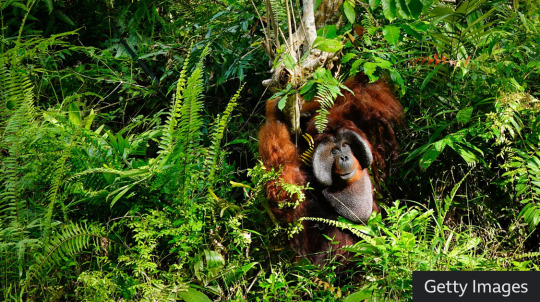
“[An archipelago in the Indian ocean] experienced a major whale comeback after signing up to a debt for nature swap[….] In Sri Lanka's capital of Colombo, local efforts have transformed what was once a rubbish dump to a wetland teeming with [wildlife….]”
2. Louisville launches America’s first 100% electric garbage truck fleet

““These innovative EV collection trucks will fulfill our trash, compost and recycling needs, reduce noise pollution, and include larger windshields to increase each driver’s field of vision and lower greenhouse gas emissions[….]” [The trucks are equipped with] audible devices that alert nearby drivers and pedestrians to compensate for their quieter operations.”
3. How a nearly extinct crocodile species returned from the brink in Cambodia

“By the late nineties, [Siamese crocodiles] were thought to be extinct. […] Today there are about 1,000 Siamese crocodiles in the wild[….] The first crocodiles were reintroduced into the wild in 2012 and they have begun breeding in the wild: over a hundred eggs were discovered in the forests in July, the most so far.”
4. Before his death, this conservative combat veteran filmed a PSA advocating for his transgender son

““Eric [“a conservative South Carolina U.S. Army combat veteran and father of a transgender child”] believed in the importance of freedom for trans kids — the right to live authentically and without fear,” [his widow] said. “He saw this not as a political issue but as a human one, recognizing that every child deserves the chance to thrive and feel whole.”” [Curator’s note: obviously, utmost condolences to Eric’s family; I’m including this as good news because it’s impactful to see a respectable member of the political party more often known for transmisia instead publicly advocating for his son’s human - not just political - rights]
5. Azores to create largest Marine Protected Area in North Atlantic – and a 'blueprint' for the rest of the world

““The Azores’ waters are a hotspot for marine life, hosting a third of the world's whale and dolphin species,[…” and harbouring] “cold-water corals and sponge fields that act as nurseries and feeding grounds for countless species, from deep-sea sharks to commercially valuable fish stocks.””
6. ‘It’s a big lever for change’: the radical contract protecting Hamburg’s green space

“Citizen power forced Germany’s greenest city-state into a binding agreement balancing housing and nature[….] The authorities signed an agreement with the citizen’s initiative to protect 30% of Hamburg’s land area – 10% as untouchable nature reserves and 20% with a looser conservation status – and ensure the share of public green space in the city rises over time.”
7. Behind the Scenes at the Federal Bee Lab Powered by Native Plants
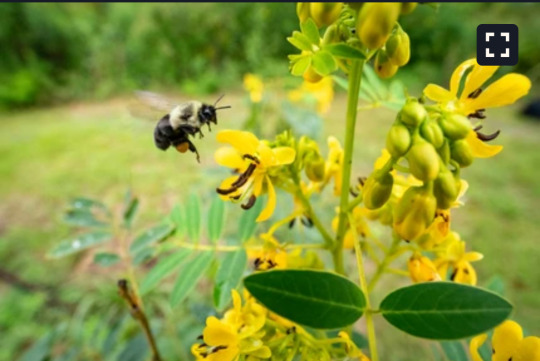
“Once native plants reappeared at the lab, he says, the impact was dramatic. In the first year, many of the region’s 200 native bee species arrived in droves. [… B]irds Droege had never before seen on the premises began to turn up to feed on the native plant seeds[….]”
8. Atlanta neighborhood hired case manager to address rising homelessness. It's improving health and safety for everyone

“Michael Nolan, an Intown Cares social worker, is trained in an approach that emphasizes individual autonomy and dignity, recognizes that being homeless is a traumatic experience, and prioritizes access to housing. [… H]iring a social worker has enabled East Atlanta Village to resolve conflicts gently, through conversation and negotiation.”
9. Loggerhead Sea Turtle Nests Make a Remarkable Comeback in Greece

“As long-lived and migratory species, [loggerheads] contribute to the health of seagrass beds and coral reefs, which are vital habitats for many marine organisms. Their nesting activities also contribute to beach ecosystems and help promote biodiversity.”
10. Rapid genome analysis of a Whippet sighthound sets new standard for biodiversity research

“[Scientists] have sequenced and analyzed the complete genome of a Whippet sighthound in less than a week. […] Rapid analysis is increasingly important for the conservation of endangered species, [… giving] insights into their biological relationships, evolution and adaptations to environmental conditions.”
October 15-21 news here | (all credit for images and written material can be found at the source linked; I don’t claim credit for anything but curating.)
#hopepunk#good news#conservation#wildlife#habitat#habitat restoration#electric vehicles#waste management#crocodiles#reptiles#conservatives#veterans#trans rights#protect trans kids#human rights#ocean#whale#dolphin#shark#coral reef#germany#native plants#native bees#bees#homelessness#homeless#unhoused#sea turtle#dogs#genetics
40 notes
·
View notes
Text

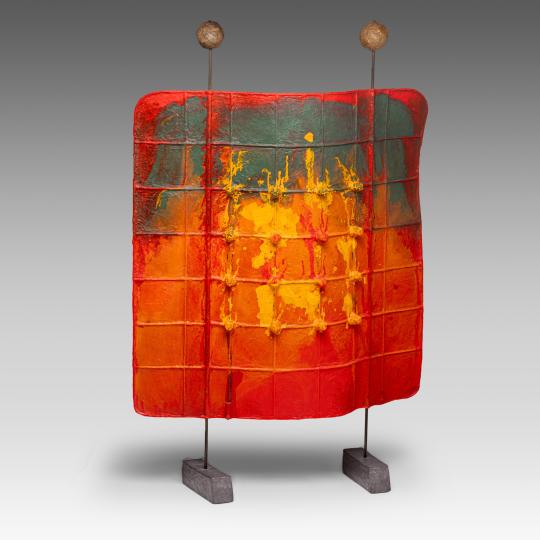


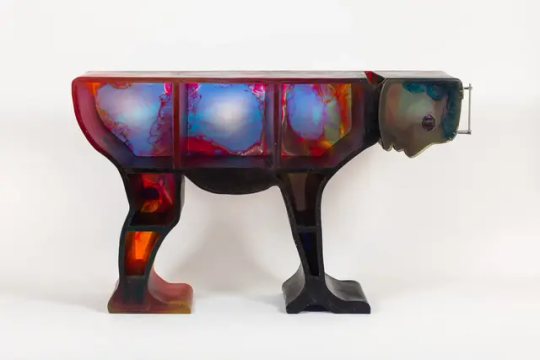





Gaetano Pesce (8 November 1939 – 3 April 2024)
Moving against the stream of rational, functional modernism in the 1960s and early 70s, Mr. Pesce experimented with materials and production methods to create furniture pieces imbued with political or religious meaning for brands from Cassina to B&B Italia.
Many would go on to become icons of Italian design including the Up5 chair – an innovative vacuum-packed chair designed to resemble a female prisoner – which he designed for B&B Italia precursor C&B.
Pesce moved to New York in 1983 and began to move away from mass production to create "standardised series" in everyday materials like resin, adapting conventional production techniques to create varied and imperfect outcomes.
The result are pieces such as the 1884 Pratt chair, which toe the line between functional design and decorative art, helping to create a new category that would later become collectible design.
Mr. Pesce was born in the Italian city of La Spezia in November 1939, only two months after the start of world war two.
As was common at the time, he trained in both architecture and design, studying first at the University of Venice and later at the Venice Institute of Industrial Design.
Among his architecture projects is the Organic Building in Osaka from 1993, with its plant-covered facade made of orange fiberglass that served as a precursor to today's vegetation-covered green walls.
But Mr. Pesce's most pioneering and well-known work happened in the world of design. In the late 1960s, he became one of the leaders of Italy's Radical Design movement, rejecting modernism's rigid focus on forms dictated by function.
Instead, Pesce focused on the idea that functional objects, much like art, could carry a deeper message.
One of the most famous examples is the controversial Up5 chair from 1969, which manufacturer B&B Italia describes as "the first product of Italian design with a political meaning".
Rest In Power !
"Up 5 & 6" Dressed Up Chair & Ottoman, 1969 – 2014, Polyurethane foam, fabric, Height: 40.5 in (102.87 cm)Width: 47 in (119.38 cm)Depth: 51 in (129.54 cm)Seat Height: 16 in (40.64 cm),
“Square Airport Lamp” (1986/1994). Photography by Elizabeth Carababas/The Future Perfect. Light sculpture consisting of a flexible rubber membrane studded with small light bulbs. Although made from a mold, no two lamps are alike, due to the imperfections that arise from the hand-mixing and pouring of colored urethane. H 92 - W 65 Cm,
"Feltri" Armchair for Cassina, 1980 -1989, Felt, Fabric, Resin, Width: 156 cm, Depth: 80 cm, Height: 129 cm, Seat height:42 cm, Courtesy: Oldera,
"Pratt Chair #7," 1984 2018 (purple), 2018, Transparent polyurethane, :93 x 53 x 53 cm. (36.6 x 20.9 x 20.9 in.),
"The Cabinet of The Tired Man," 2018, Photo: Courtesy of Salon 94 Design and Gaetano Pesce,
"Tramonto a New York" three-door screen, for Cassina, Made of coloured resin, hinges and feet in burnished brass, Width: 221, Height: 199,
"Organic" Building, Osaka, Japan, Completed in 1993 to embody the corporate ideal of Oguraya Yamamoto Co., Ltd,
"La In-Portante" Modular Bookshelf from the "Abbraccio" Series, 2010. Comprising 57 adjustable polyurethane resin shelves. Produced by Le Fablier, Italy. Polyurethane resin, painted wood, lacquered metal, 86½ x 118¾ x 16⅞ in. (219.7 x 301.6 x 42.6 cm) Courtesy of Sotheby's,
La Michetta Modular Sofa,Compostion of 8 by Meritalia, Structure in Lacquered Wood Seat with Elastic Belts, Flexible Polyurethane & Fiberfill Padding, Dimensions: W370 x D245cm,
Unique 'Ireland' table, Made of polyurethane and metal. The table was made and exhibited in 1996 by Gallery Mourmans, Knokke-Zoute, Belgium. It was part of a series of 'EU tables', where all 15 member countries were represented as a table, in this case Ireland. The top of the table has the shape of the outlines of the country and it stands on legs in the shape of question marks. W.80.71 in;H.28.74 in;D.57.09 in; (W.205 cm;H.73 cm;D.145 cm), Courtesy: Incollect.
#art#design#sculpture#furniture#seat#chair#forms#cassina#B&B#polyurethane#incollect#ireland#modular#bookshelf#table#fiberglass#sofa#gaetano pesce#rip#rip gaetano pesce#screen#iconic#up5#UP6#political#pratt chair#feltri#tramonto#new york
61 notes
·
View notes
Text
By Peter A. McCullough, MD, MPH
Please join this discussion hosted by big red podcaster David Gornoski where Dr. McCullough meets world-class independent farmer Joel Salatin to discuss government mismanagement of the bird flu crisis.
Here is some background on Salatin and the “Polyface Story”
In 1961, William and Lucille Salatin moved their young family to Virginia’s Shenandoah Valley, purchasing the most worn-out, eroded, abused farm in the area near Staunton. Using nature as a pattern, they and their children began the healing and innovation that now supports three generations. Disregarding conventional wisdom, the Salatins planted trees, built huge compost piles, dug ponds, moved cows daily with portable electric fencing, and invented portable sheltering systems to produce all their animals on perennial prairie polycultures. Today the farm arguably represents America’s premier non-industrial food production oasis. Believing that the Creator’s design is still the best pattern for the biological world, the Salatin family invites like-minded folks to join in the farm’s mission: to develop emotionally, economically, environmentally enhancing agricultural enterprises and facilitate their duplication throughout the world. The Salatins continue to refine their models to push environmentally-friendly farming practices toward new levels of expertise.
Gornoski does a masterful job framing the issues. Salatin believes we should let a natural immunity strategy play out and only cull the sick birds. I can tell you as a doctor, The Wellness Company did not wait for the government agencies to step in and protect farmers like Salatin. We announced the Prevent and Protect Program to supply our critical poultry and egg suppliers with bird flu kits which will help keep the workers safe as they allow flocks to develop natural immunity.
11 notes
·
View notes
Text
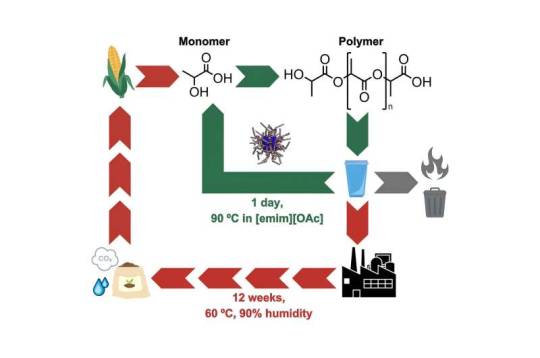
An enzyme used in laundry detergent can recycle single-use plastics within 24 hours
Scientists at King's College London have developed an innovative solution for recycling single-use bioplastics commonly used in disposable items such as coffee cups and food containers. The novel method of chemical recycling, published in Cell Reports Physical Science, uses enzymes typically found in biological laundry detergents to "depolymerize"—or break down—landfill-bound bioplastics. Rapidly converting the items into soluble fragments within just 24 hours, the process achieves full degradation of the bioplastic polylactic acid (PLA). The approach is 84 times faster than the 12-week-long industrial composting process used for recycling bioplastic materials. This discovery offers a widespread recycling solution for single-use PLA plastics, as the team of chemists at King's found that in a further 24 hours at a temperature of 90°C, the bioplastics break down into their chemical building blocks. Once converted into monomers—single molecules—the materials can be turned into equally high-quality plastic for multiple reuse.
Read more.
#Materials Science#Science#Enzymes#Plastics#Polymers#Recycling#King's College London#Bioplastics#Biomaterials#Polylactic acid
55 notes
·
View notes
Text
Brazilian scientists develop rapidly degradable bioplastic

Brazilian researchers have developed a type of bioplastic that degrade quickly when composted or when discarded in the environment. The material is innovative as it uses small bioactive encapsulated particles from functional foods like carrots and chia. Unlike synthetic plastic, it does not leave residues that pollute the environment, harming life in the oceans and even human health.
The research is coordinated by Maria Inês Bruno Tavares, a professor at the Institute of Macromolecules at the Federal University of Rio de Janeiro (UFRJ), and has had two recent articles published in the international scientific journal Journal of Applied Polymer Science, including a feature on the May cover.
Plastic pollution is one of the greatest challenges of our time, according to the United Nations (UN). Around the world, one million plastic bottles are bought every minute and some five trillion plastic bags are used every year. Half of all plastic produced is designed for single-use purposes, used only once and then discarded.
Plastic is made up of polymers, which are large molecules. In order to be broken down in the environment, Professor Tavares noted, these molecules are fragmented into smaller particles, until they reach what is known as microplastic. Microplastics are in the air, in the water, end up being absorbed by plants, ingested by both animals and humans, and can cause allergies and damage health.
Continue reading.
#brazil#brazilian politics#politics#science#environmentalism#image description in alt#mod nise da silveira
25 notes
·
View notes